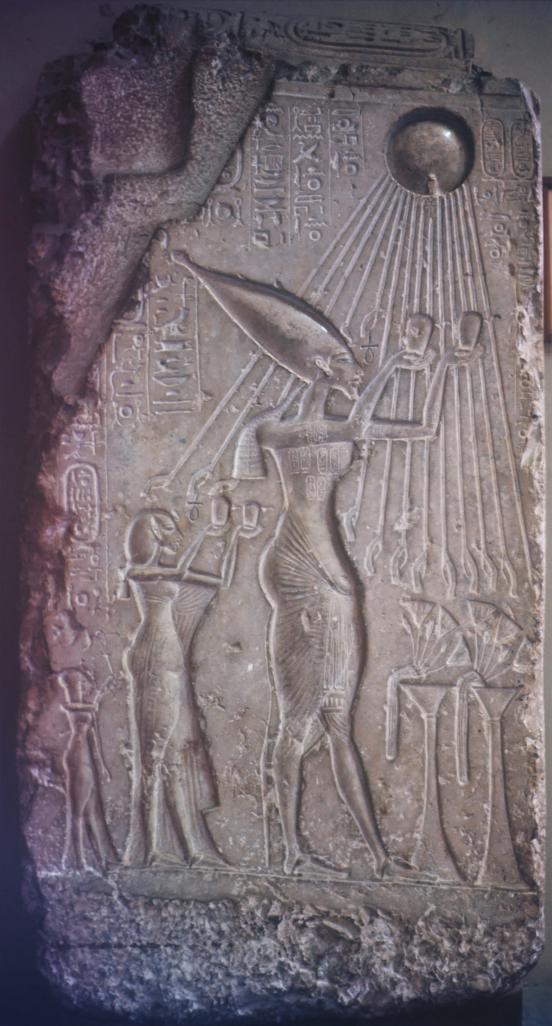Amenhetep IV/Akhenaten

Arguably the most-discussed and least-understood pharaoh of ancient Egypt, Amenhetep IV, later called Akhenaton, ruled for 18 years in Dynasty XVIII. A son of Amenhetep III and Queen Tiy, he spent his early years at Thebes, living in the royal palace at Malqata. He may have served for a time as his father’s co-regent. He married Nefertiti, the daughter of Ay, the king’s Vizier. Amenhetep IV’s father had given considerable prominence in his religious practices to solar cults, perhaps in part to limit the rapidly growing power of the priesthood of Amen at Karnak, and Amenhetep IV was even more zealous in his disdain for Amen, instead giving special emphasis to an aspect of the sun god Ra-Horakhty called the Aten.
He built a temple to the Aten directly east of the Temple of Amen at Karnak. Shortly thereafter, he, his family and court moved from Thebes to establish a new town that he named Akhetaten - “Horizon of the Aten” - at a site in Middle Egypt today called al Amarnah. There, he built huge temples to the Aten, and established a city filled with scribes, officials, artisans, and priests. The young king changed his name from Amenhetep to Akhenaten, “Glory of the Solar Disk,” and he and his growing family devoted themselves exclusively to their new god. The art of what Egyptologists call the Amarna Period has been described as naturalistic, and there is considerable emphasis upon the natural world. But, in fact, the art - and especially its representation of the royal human for - seems grotesque. It deliberately distorts the human body, mixing male with female characteristics, deforming the skull, creating stick-like figures with distended abdomens and gaunt faces.
The temples at al Amarna were open to the sky, appropriate for the worship of a sun god, and constructed in blindingly white limestone. Relief subjects, such as scenes of craftsmen and daily life, formerly found only in private tombs, now appeared in temple decoration. Great emphasis was given to representations of the king, shown with his wife and daughters in affectionate poses, adoring the Aten and receiving life, the ankh-sign, from him. Akhenaten was pharaoh for a total of eighteen years. We do not know where he was buried. The “royal tomb” at Amarna was never used, and no tomb at Thebes has been found with his name on it (although KV 55 has been suggested as a possible burial site). After his death, and especially during the reign of Rameses II, systematic attempts were made to deface and demolish his monuments and obliterate his name from the record. Later king lists make no mention of him. Worship of Aten vanished almost immediately after Akenhaten died. Temples to Amen and other gods, closed for most of Akhenaten’s reign, were reopened and their priests returned to their former positions of authority.
